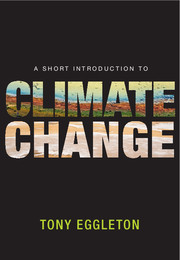Book contents
- Frontmatter
- Contents
- Preface
- 1 The spirit of enquiry
- 2 Global warming
- 3 Weather is not climate
- 4 The thermostat
- 5 Droughts and flooding rains
- 6 Snow and ice
- 7 The ocean
- 8 From ice-house to greenhouse
- 9 The past 2000 years
- 10 Carbon dioxide and methane
- 11 Denial
- 12 Bet your grandchildren’s lives on it, too?
- Notes
- Index
- References
4 - The thermostat
Published online by Cambridge University Press: 05 November 2012
- Frontmatter
- Contents
- Preface
- 1 The spirit of enquiry
- 2 Global warming
- 3 Weather is not climate
- 4 The thermostat
- 5 Droughts and flooding rains
- 6 Snow and ice
- 7 The ocean
- 8 From ice-house to greenhouse
- 9 The past 2000 years
- 10 Carbon dioxide and methane
- 11 Denial
- 12 Bet your grandchildren’s lives on it, too?
- Notes
- Index
- References
Summary
The selective absorption of the atmosphere is … not exerted by the chief mass of the air, but in a high degree by aqueous vapour and carbonic acid. The influence of this absorption is comparatively small on the heat from the sun but must be of great importance in the transmission of rays from the Earth.
Svante Arrhenius, 1896Many of us in Australia have a rather comfortable life. If it gets a bit hot, we can set the thermostat to cooler and let the air conditioner do its job. If it is a cold winter’s day in Canberra, on go the heaters and the house warms up to its automatically controlled temperature. We can change the comfort level as we choose.
The Earth also has a thermostat, and until recently the Earth was in charge of its own temperature setting. But much to the surprise of many scientists, and the disbelief of almost everyone else, over the past two centuries some of that control has been taken over by humans. At first we had no idea that was what we were doing, but gradually as we learned more about the way the Earth’s thermostat works, it has become increasingly clear that we have the power to set the Earth’s temperature.
- Type
- Chapter
- Information
- A Short Introduction to Climate Change , pp. 51 - 70Publisher: Cambridge University PressPrint publication year: 2012



